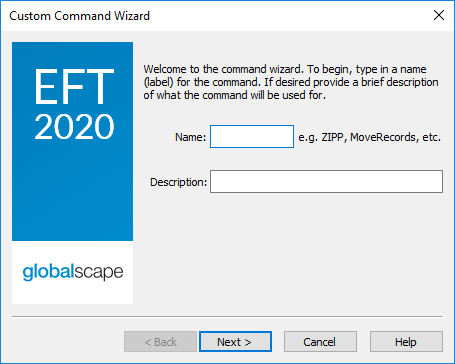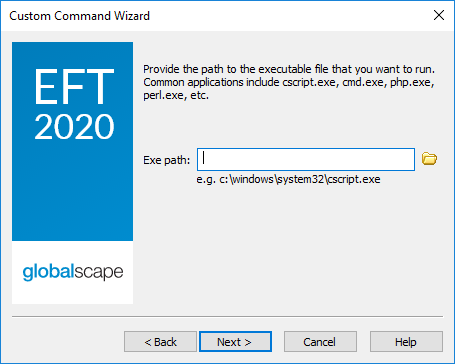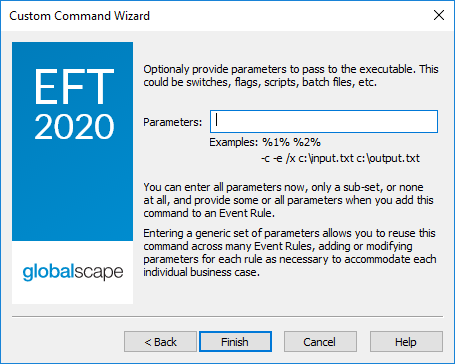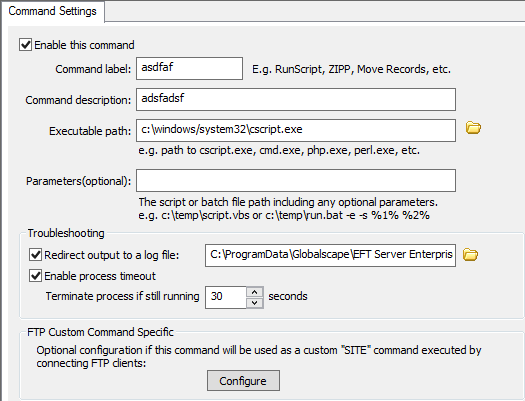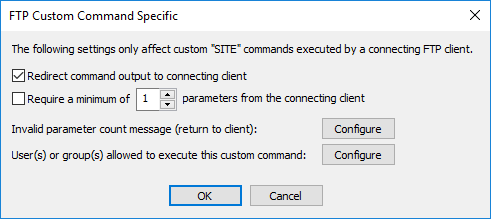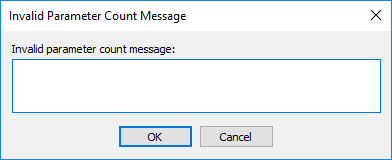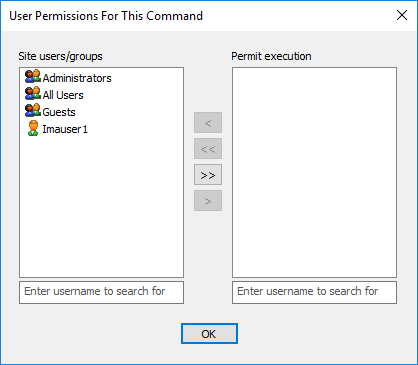Creating a Command with the Custom Command Wizard
The Custom Command wizard steps you through the process of creating a Command to tell EFT to execute programs, scripts, or batch files.
To create a command with the Custom Command wizard
-
In the left pane, right-click the Commands node, and then click New Command.
-
Click the Commands node in the left pane, then, in the right pane, click New.
-
Press CTRL+M.
-
In the Name box, type a descriptive name for the command. You will reference the Command name in Event Rules, so you should give the Command an intuitive name. For example, instead of Command 1, you might call it Run CScript.
-
Provide a Description that will help you identify the command.
-
Click Next. The path page appears.
-
In the Path to executable box, browse to or type the path to the executable. For example, you can specify a program, a batch file, or a Windows scripting executable, such as cscript.exe or wscript.exe. If you are connected to EFT remotely, you can type the path to the file, but be sure the path is relevant to the EFT computer, not the remote interface.
-
(Optional) Specify any required parameters. Alternately, you can specify the parameters when you add the Command to an Event Rule. If there are "standard" parameters that you will always use with the script, you can specify them here, then modify them or add additional parameters when you add the Command to an Event Rule.
-
Click Finish. The Command is added to the Commands node for the Site and appears in the Command Settings tab in the right pane.
-
If the Command is a custom SITE command executed by a connecting FTP client, you can also configure the FTP Custom Command Specific settings, the invalid parameter count message, and which Groups are allowed to execute the Command by clicking Configure. The FTP Custom Command Specific dialog box appears.
-
Select the Redirect command output to connecting client check box to redirect the output from the executed command to the client in a 220 response message. If the check box is not selected, then the output of the command is not returned to the client, even though the command is still executed on the server. Redirecting command output can help the end user ascertain whether the command worked properly (depending on result codes returned by the script or application executed by the custom command on the server).
-
If you want to force the FTP client to send a minimum number of parameters, select the Require a minimum of check box and specify the minimum number of parameters required.
-
To provide a message that users will receive when the parameter number is not met, next to Invalid parameter count message, click Configure. Provide the message, and then click OK.
-
To specify the users and Groups that can execute the Command, next to User(s) or group(s) allowed to execute this custom command, click Configure. Double-click the users and/or groups, or use the arrows to move them between the Site users/groups list and the Permit execution list. To search for specific users, type the username in the search box.
-
Click OK, then click Apply to save the changes on EFT.
The Custom Command Wizard appears.
